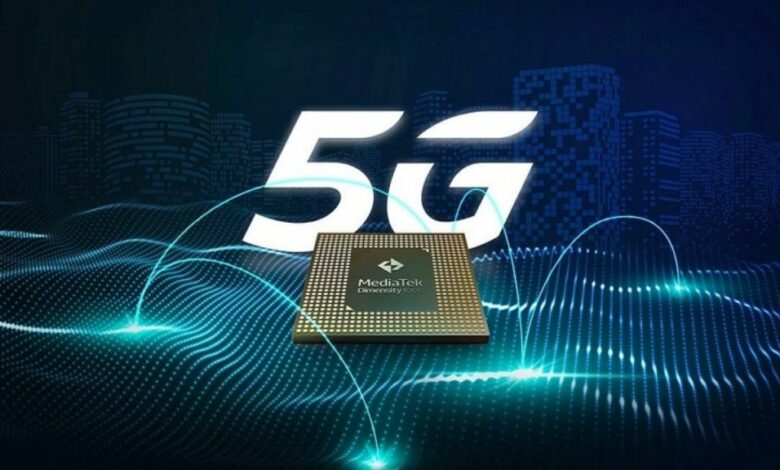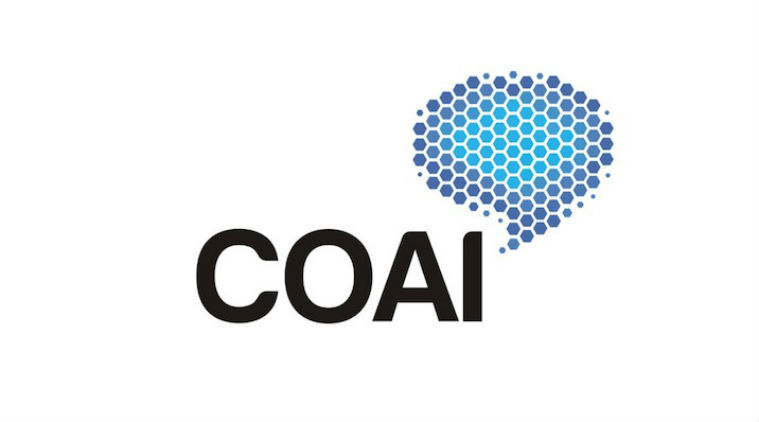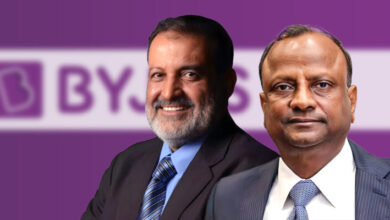The road to 5G in India is full of challenges

The road to 5G in India is full of challenges
During the Covid-19 epidemic, 5G has made its reach in many countries of the world. If everything goes according to plan, then soon 5G technology can become a reality in our country too. But there is no doubt that the path of 5G in India is full of difficulties, in which apart from the economic, infrastructural and practical challenges, there is also doubt among the common people about the adverse effects of 5G on health.
Recently, a senior official of the Department of Telecommunications (DoT) has said that the long-awaited 5G spectrum auction can take place in India by May this year. Because of this, it is being said that if the Department of Telecom and telecom companies can complete the process of auction of 5G spectrum without any dispute, then the use of 5G technology in the country will be started from this year in some areas and institutions. This is reflected in some recent steps taken by the government.
During the Covid-19 epidemic, 5G has made its reach in many countries of the world. If everything goes according to plan, then soon 5G technology can become a reality in our country too. But there is no doubt that the path of 5G in India is full of difficulties, in which apart from the economic, infrastructural and practical challenges, there is also doubt among the common people about the adverse effects of 5G on health. In such a situation, creating trust and awareness among consumers about 5G is also a big challenge.
5G means fifth-generation network. Earlier, LTE technology of 4G had knocked in 2009. The maximum internet data speed of the 4G network has so far been recorded at 1 Gbps (Gb per second), which also makes ‘3D Virtual Reality’ possible. In 5G, this speed will reach 10 to 20 G.B. per second. Broadly speaking, with the advent of 5G, the Internet in our mobile phones will start running 20 to 50 times faster. With 5G internet, you will be able to download a high-definition movie in less than a second.
There is a plan to use the mainly high band, i.e., millimeter frequency in 5G. At present, our mobile phones and most laptop-commuters work on frequencies below 6 GHz. But due to the increasing number of electronic devices using the Internet, this frequency is getting jammed and is becoming a victim of overload. That is why now preparations are being made to use the empty frequency band of 24 to 40 GHz through millimeter frequency. Even though its coverage area will be less, in terms of speed, its performance will be much better.

The biggest drawback of a network with a high band frequency is that it is as good as it wants in terms of speed but cannot cover a very large area. The reason for this is that millimeter waves cannot penetrate walls and mirrors, limiting its coverage area to a radius of a couple of kilometers.
In the remote rural areas of a vast country like India, it is impossible to reach the Internet through a network with high band frequency. Therefore, the Department of Telecommunications is considering high band frequency within a radius of one or two kilometers as suitable. It is also advocating for widespread use of ‘Low Band’ and ‘Mid Band’ frequencies so that even remote rural areas can get superfast 5G internet facilities easily.
The industry has altered and adapted as technology thrives and plays a larger part in consumers’ lives. As a result of pervasive Internet connectivity, businesses have shifted away from brick and mortar to primarily online services. As a result of this transition, internet businesses save money on overhead expenditures such as rent and wages that come with running a physical store.
While internet shops are more convenient, consumers must pay extra shipping and handling fees when purchasing goods and services. Even though technology has altered several businesses in the last decade, shipping and postage have stayed essentially untouched. Conventional postal service providers, including the United States Postal Service (USPS), UPS (UPS), and FedEx (FDX), have remained an important source of shipment for large online retailers.
With Amazon Prime Air, Amazon (AMZN) challenges the status quo. It anticipates delivery in less than 30 minutes with Amazon Prime Air. Currently, the program is in development and has not yet been executed.
However, drones’ financial and economic impact still has yet to be realized due to FAA regulations, security concerns, and privacy concerns.
Low Band 5G provides a maximum speed of 250 Mbps on frequencies below 1 GHz. Mid band 5G provides a maximum speed of 900 Mbps on the frequency of 1 to 6 GHz. And what about the high band frequency? It gives at least 1 Gbps speed on the frequency of 24 to 40 GHz.
5G technology will work on ultra-low latency. Latency is the time it takes to transfer data from one device to another. At present, the latency of 4G is 50 milliseconds; according to technical experts, 5G will reduce it by at least one millisecond. It will prove to be very effective for activities like Virtual Reality, Internet of Things, Factory Robots, Driverless Cars, Smart Cities, Online Gaming, and very fast connectivity and real-time updates.
The government is confident that by December 2022, 5G will start making its way in India. It has also been announced by the Department of Communications to provide 5G network facilities in 13 cities by December 2022. However, if experts are to be believed, India will not be able to provide 5G as a product to its consumers before the year 2023.
Experts raise the question of whether the country’s telecom companies are ready for 5G? This question is abound in the sense that consumers are still seen complaining about 4G network and internet speed in different parts of the country.
In many areas of the country, many people are still using the speed of 2G and 3G in the name of 4G. For them, high-speed Internet is like a dream even today. Anyway, India ranks 129th out of 139 countries in terms of internet speed. In India, maybe even after the rollout of 5G by 2023, the internet speed is getting the same as 4G and 3G in the name of 5G?
Because of the vastness, system, working style, and problems of the Indian subcontinent, the path of 5G in the country appear quite challenging. Suitable infrastructure (optic fiber cables, towers, etc.) and new gadgets will have to be developed to run 5G internet. At present, most of the handsets being used extensively are for 4G only.
In such a situation, companies making handsets will have to develop 5G compatible handsets and applications, on which the pace of work is slow. Does the question arise whether India will be able to rollout 5G infrastructure and services within 12-13 months? It is worth noting that in this matter, our previous record regarding 4G and 3G has been very bad.
The entry of Reliance Jio in the telecom market has changed the face and face of the telecom companies. The expensive spectrum, unlimited voice calls, and very cheap data tariffs have spoiled the balance sheets of companies. In the current situation, if the bids are invited for the 5G spectrum, how will the Internet Service Provider companies participate in it?
At present, the entire responsibility of 5G rests on select Internet service providers like Jio Airtel, but how much preparation is there for them? However, only these few companies have to face the technical and policy challenges in the way of the 5G network.
The base prices of the 5G spectrum in India are much higher than the global average, and the telecom market is burdened with stiff competition as well as the debt of around Rs 8 lakh crore. Companies are not able to make a profit. In such a situation, if the auction for the 5G spectrum is done now, then how the companies will take part in it? Anyway, the history of bidding for spectrum by taking loans has not been very good in India. An example of this is the 2G spectrum scam.
There are many health apprehensions and conspiracy theories regarding 5G as compared to the previous telecom technologies. There are also unexpected challenges of opposition, mistrust, and controversy over its health effects, the spread of diseases, or its ill effects on air travel. However, no solid scientific evidence has been found so far so that it can be said that 5G is harmful or dangerous for humans.
Certainly, with the advent of 5G, not only will people get great connectivity, but many sectors like mass communication, education, health, banking, agriculture, engineering, medicine, business, administration, etc., will also be benefited widely. It is possible that in the next one-and-a-half years, commercial use of 5G may start in some areas, companies, and institutions on an experimental level, but it is not impossible but difficult to reach it to the common people.
Despite low prices, India’s telecom carriers are counting on a cost-effective but still nascent technology to make 5G services available to a country in which ICT consumption is on the rise. A telco’s network deployment costs could decrease significantly by deploying Open Radio Access Network, analysts say, since it is interoperable with other networks like 4G.
As an alternative to the current practice of having a single master network service agreement, a carrier can also work with multiple vendors to offer different services over the same network, saving it money. One carrier’s CAPEX is accounted for by its Radio Access Network alone at 70 percent.
Moreover, given the relatively short propagation of airwaves that will be used for 5G, companies will need to deploy many base stations to guarantee deep coverage, leaving little room for any savings on that front.
Where does India stand?
A 100-day deadline was set by Ravi Shankar Prasad, Minister of Communications, Electronics and Information Technology, in June 2019. Accordingly, the 5G airwaves spectrum auction would take place within the year.
That promise has not held up over time. On March 1, the first auction for the fourth-generation (4G) mobile networks in about four years will take place. 5G is still in the planning phase, but the auction for 4G gets underway on March 1.
Three of the big three telcos are expected to participate in the auction- Airtel, Vodafone Idea, and Reliance Jio. “Unconscionably long delay” was one of the complaints made against the Department of Telecommunications (DoT) on Monday by the Parliamentary Standing Committee of Information Technology. We propose that spectrum auctions, including those covering 3300 MHz to 3600 MHz, should take place at the earliest possible time.
There is a shortage of spectrum as well as high prices, according to the committee. The company noted in the report that the availability of 175 MHz in 3300 MHz to 3600 MHz bands would allow for the assignment of approximately 50 MHz per provider, which is far below the global average. Further, the report stated that not allocating enough spectrum will not only lead to poor quality services for the consumers but will also result in severe underutilization of investments since the equipment installed will not be utilized to its fullest potential.
The Cellular Operators Association of India (COAI) is concerned about the price differential between the country and other countries. TRAI recommended Rs. Four hundred ninety-two crores per MHz, according to the association. Spectrum in the range of 3300 MHz to 3600 MHz is reserved for 5G, with a far higher price than the spectrum auctioned in other countries.

The report indicated that the 5G spectrum price in the U.S. is seven times higher than the price in the United Kingdom, 14 times higher than the price in Australia, 35 times higher than the price in Spain, and 70 times higher than the price in Austria.
Reliance Jio informed that its 5G technology was developed using indigenously developed hardware, networks, and other components, while Bharti Airtel expressed reservations about the “exorbitantly high” cost. The chairman of Reliance Industries’ telecom unit, Jio, had announced that the company would release 5G technology by the middle half of 2021, according to an announcement made in December 2020.
As compared to its global implementation, 5G in India is moving slowly, raising fears that the technology will fail to reach the same level of adoption as its predecessors 2G, 3G, and 4G, which failed to reach its potential for four years, ten years and seven years respectively.
Unless time-bound steps are taken in core areas where government intervention is needed, India is likely to miss out on 5G opportunities after missing out on the 2G, 3G, and 4G bus, the 116-page-long report noted. Based on these recommendations, India will continue to use 4G for at least another five to six years, which supports the upcoming auction set to take place next month.
Does Indian I.T. get a fair deal?
If the reserve price remains so high, Bharti Airtel has said numerous times that it will not bid for a 5G spectrum. The Indian government is also in favor of this view. An official from the Ministry of Finance stated that DoT’s demand for 5G spectrum is prohibitively high.
Should adopt a holistic view
Government officials should assess the economy’s health, say experts. In multiple areas of the economy, affordable 5G holds enormous potential for exponential growth.
According to experts, the government should not view spectrum sales as a means to maximize revenue. Instead, they argue, the government ought to take a broader view, considering both the health of the telecommunications industry and 5 G’s potential to spur economic growth across multiple sectors.
As a result, they argue, 5G services will remain affordable, allowing the common man to take part in benefits associated with the system. In the coming months, this country will be able to easily ramp up internet speeds thanks to 5G technology, which has been in development for some time.
Compared to the 2G, 3G, and 4G networks currently in use in India, this new technology backbone is more efficient, smarter, and 100 times faster, opening up unimaginable opportunities in terms of economic growth. The Internet of Things fosters smart cities, smart homes, and the Internet of everything, facilitating smart homes, smart cities, and the Internet of things.
$3.5 trillion investment needed globally
In the next 15 years, 5G-related investments are estimated to reach $3.5 trillion in the global value chain. Three-and-a-half times as much incremental output will result from this.
In addition, it may open the door to disruptive new technologies that require instantaneous data transmission at high data rates, low latency, and a massive amount of connectivity. The technology will enable India to leapfrog several generations of technology and advance even faster on the global economic ladder.

The pricing issue needs to be addressed.
Indian policy planners and the industry will need to overcome many challenges before they will fully understand and utilize the benefits of 5G technology. Firstly, spectrum pricing needs to be addressed. In their opinion, the Department of Telecommunications (DoT) is asking for too much for spectrum, which is unanimously agreed upon by Reliance Jio, Vodafone Idea, and Bharti Airtel.
In their numerous platforms, they have repeatedly said the reserve price of $67 million per megahertz for 5G airwaves is much too high. A comparison with the U.S. and South Korea shows that the U.S. is 30-40 percent more expensive.
On the sidelines of a 5G workshop last year, Cellular Operators’ Association of India (COAI) Director General Rajan Mathews said a majority of our operators believe the 5G spectrum is too expensive, and their balance sheets cannot afford it.
Edited and published by Ashlyn Joy




